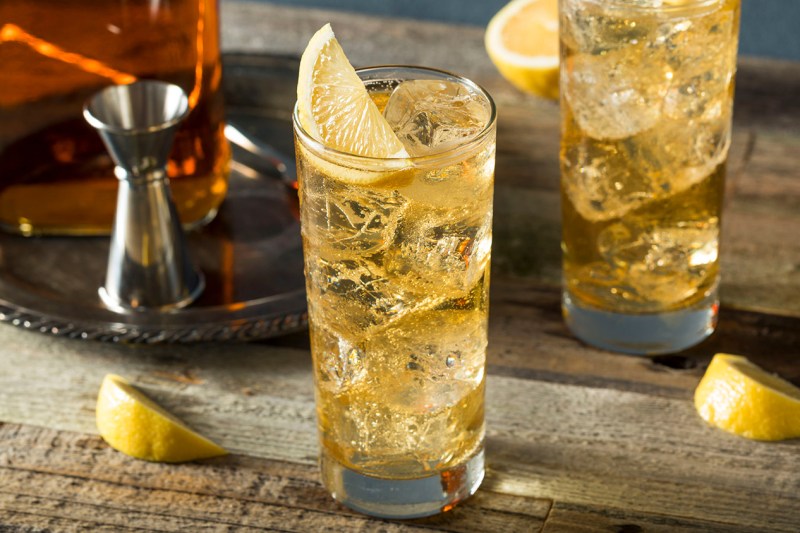
If you were to look at Japanese drinking culture as a whole, you’d notice that a couple of drinks dominate the landscape. For the Japanese, beer is king, with Asahi being the most popular brand (follow by Kirin, Sapporo, and others). Behind that, though, there is a large culture of drinkers that consume those oh-so-delicious Japanese whiskies and when they are not drinking them neat or on the rocks, there is one drink that has risen above the others to prominence: the highball. (We also can’t forget saké, but that is for another article.)
A simple mixture of soda water and whisky, this drink is served across Japan in countless bars and has seen multiple periods of popularity, according to Naoki Tomoyoshi, chief of international sales and marketing for Nikka Whisky. Popular in the 1960s and ’70s among businessmen with disposable income, highballs eventually fell out of favor as ready-to-drink options such as canned whisky and water (called Mizuwari in Japanese, and yes, they are as amazing as they sound, especially when you consider that you can buy them in 7-11s). It wasn’t until the mid-2000s that whisky companies (Suntory being the one behind the push) started marketing highballs again, appealing to the new generation of drinkers.
Okay, you may be thinking. It’s a highball. It’s whisky and soda, how much can there really be to it?
The purpose of mizuwari (whisky and water) is not to dilute, but to enhance the aroma and flavors of Yamazaki. pic.twitter.com/V9wgeELAHc
— Suntory Whisky (@SuntoryWhisky) March 10, 2016
Sure, you can look at it as simply a mix of whisky and soda — a 1:4 ratio, stirred slowly so as to not let the gas escape the soda water, preferably into a chilled glass that helps reduce the rate of dilution — but the story of the highball goes much deeper than that. It can shapeshift, depending on where you are and what sort of establishment you’re in. It walks the line between high cocktail art and everyday drinking. It can stand on its own as a cocktail or it can be used as a replacement for beer, according to Tomoyoshi.
In Japan, everything from the quality of the ice to the glassware to the type of whisky is thought through. These highballs are usually priced between 600 and 1,000 yen (roughly between $5.50 and $9) and are meant to be as much of an experience as a five-ingredient cocktail would be. In terms of garnish on these highballs, opinions vary. Some call for a lemon wedge while others do not. For highballs with nice whisky, Tomoyoshi says, you risk losing the flavor of the whisky if you use lemon, but ultimately it is up to you, the drinker.
Think about it, outside of soda water, which contributes to the drinkability (and length of a whisky), would you really want to mask the flavor of a whisky such as Nikka Coffey Grain with lemon? I wouldn’t.
Kickoff this long weekend with a thirst-quenching Nikka Coffey Grain Highball! pic.twitter.com/LqscUL2IpT
— NikkaWhiskyUSA (@NikkaWhiskyUSA) September 1, 2017
Arguably the more popular highball, though, Tomoyoshi says, is the highball that’s used as a replacement for beer. This highball is the kind you get at a typical izakaya (an informal after-work restaurant) and, usually, you don’t get to choose the whisky that goes into it.
“This kind of highball is what is driving the highball consumption in Japan. I think the way of this growth is similar to what you experienced with cider in the States,” Tomoyoshi says.
These highballs are cheaper than the others, ranging from 300 to 500 yen, or $2.75 to $4.50, roughly. They’re meant more as thirst quenchers than anything and are usually paired with the food you’d be getting at the izakaya.
“[In Japan,] we traditionally do not have before or after dinner drinks. Therefore, because drinking is strongly associated with eating, we tend to prefer drinks with a subtler taste at a lower proof,” Tomoyoshi says. “The fact that the majority of the consumption is ‘Dry’ beer [such as Asahi Super Dry] I think supports this view.”
What it all comes down to, then, the highball can perform in just about any setting you need it to, making it pretty much the perfect beverage. You just need to make sure you have a couple of types of Japanese whisky on hand, so you can choose how much you want to class it up on any given night at home.
How to Make a Highball
- 1 oz Japanese whisky
- 4 oz soda water
Method: Take a chilled tumbler and add ice cubes. Pour in whisky and slowly add soda water. Stir slowly to incorporate. Add lemon zest or a lemon wedge (juiced into the highball) as garnish if you wish.
Editor’s Note: This article is part of The Manual’s larger Journey to Japan travel guide. Over the course of a month, our writers had the pleasure of experiencing Japan in its many forms, from high-rise bars in Tokyo to traditional tea-ceremonies in Kyoto. We hope this series of articles will not only inform but inspire you to take your own trip to the Land of the Rising Sun.




